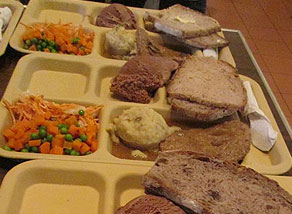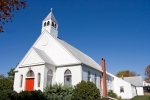October 25, 2013
How To: Using Social Media When Phones and E-Mail Fail
 When Yvonne Cassidy set up the social media program for Holy Apostles Soup Kitchen in New York City, she envisioned using it as a tool for fundraising, for increasing the ministry’s volunteers and supporters, and for getting the word out about the 30 year old ministry.
When Yvonne Cassidy set up the social media program for Holy Apostles Soup Kitchen in New York City, she envisioned using it as a tool for fundraising, for increasing the ministry’s volunteers and supporters, and for getting the word out about the 30 year old ministry.
She didn’t think of it as a disaster response tool.
But after Hurricane Sandy hit the East Coast on October 29, 2012, Facebook and Twitter became the main means for the soup kitchen to communicate with its volunteers, other agencies, and the community, said Cassidy, the soup kitchen’s development director.
Holy Apostles Soup Kitchen is an outreach of the Church of the Holy Apostles, an Episcopal parish in the Chelsea neighborhood of Manhattan. It serves between 1,000 and 2,000 hot meals every day, Monday through Friday. The day after the hurricane, staff and volunteers were busily making items that could be prepared without electricity. Meanwhile, the demand swelled to about 2,000 a day.
Then Holy Apostles began to run out of food. So Cassidy put out an appeal for sandwiches on the soup kitchen’s Facebook page. It yielded a flood of donations that not only kept the soup kitchen afloat while the power was out, but provided food for other nearby programs as well.
“If we ever wondered if those people in social media land where real people, they absolutely were real people with real kitchens,” Cassidy said. And they were hungry for a simple and effective way to respond to the disaster.
Cassidy offers the following insights for mobilizing a social media network after a disaster:
Start building a social media community now
“Social media is only as effective as the people in the social media community,” Cassidy said. “Building a community in the first place is the key to the whole thing.” Facebook is free, and it’s simple to set up a page for your congregation or outreach. Encourage members and volunteers who have Facebook to “like” it. That means they will receive any updates you put on the page.
To maintain a useful Facebook page, you don’t have to post information all the
Time, Cassidy said. “Just put up what’s relevant. Be driven by what you have to say.” She generally uses Holy Apostles’ Facebook page to tell people about the food they serve, to provide information about volunteering, and to share stories about the people who use their services.
After a disaster, get the word out
Holy Apostles’ Facebook page wasn’t quite a year old when Hurricane Sandy hit, Cassidy said. It had about 1,500 fans at that time. While she didn’t know exactly who they were or whether they were local, she said she took a chance and posted the need for donated sandwiches, and she provided her cell phone number for people who had questions. While posting a personal number isn’t recommended for social media, in this situation she knew there would be few avenues available for people to call and ask direct questions. “Literally my phone was ringing all day,” she said. She was able to post updated messages based on people’s questions.
Additionally, the Facebook posts allowed other service organizations to contact the soup kitchen and coordinate needs.
Keep requests clear and simple
The request for sandwiches, with clear instructions and images of what the soup kitchen did and didn’t want, helped ensure that it received what it needed. Cassidy said she made sure people knew not to send in their leftover Halloween candy in order to keep the meals healthy. But the soup kitchen did welcome the desserts and healthy snacks that contributors added to their donations of food.
Ask people to "share"
Cassidy asked Facebook fans and Twitter followers to share the information about the need for sandwiches with their networks. Sometimes people need to be reminded to do that, she added. “As a byproduct, we got a real surge in our likes and our followers,” she said. “We have about 3,000 (fans) now, a few hundred of whom came from that experience.”
That means that the number of people who are aware of and supporting Holy Apostles Soup Kitchen continues to grow long after the need for homemade sandwiches has passed. And should another disaster strike, even more people will know how to help.
You can follow Holy Apostles Soup Kitchen on Facebook at www.facebook.com/holyapostlessoupkitchen and on Twitter at @HolyApostlesNYC.
This post was first published in the October 2013 Lamplight, an online publication of Episcopal Relief & Development's US Disaster Program.





